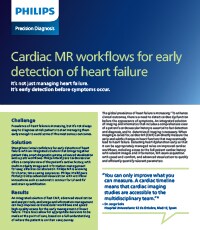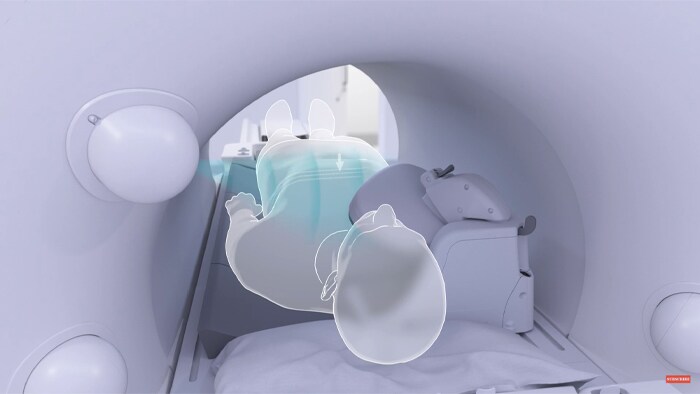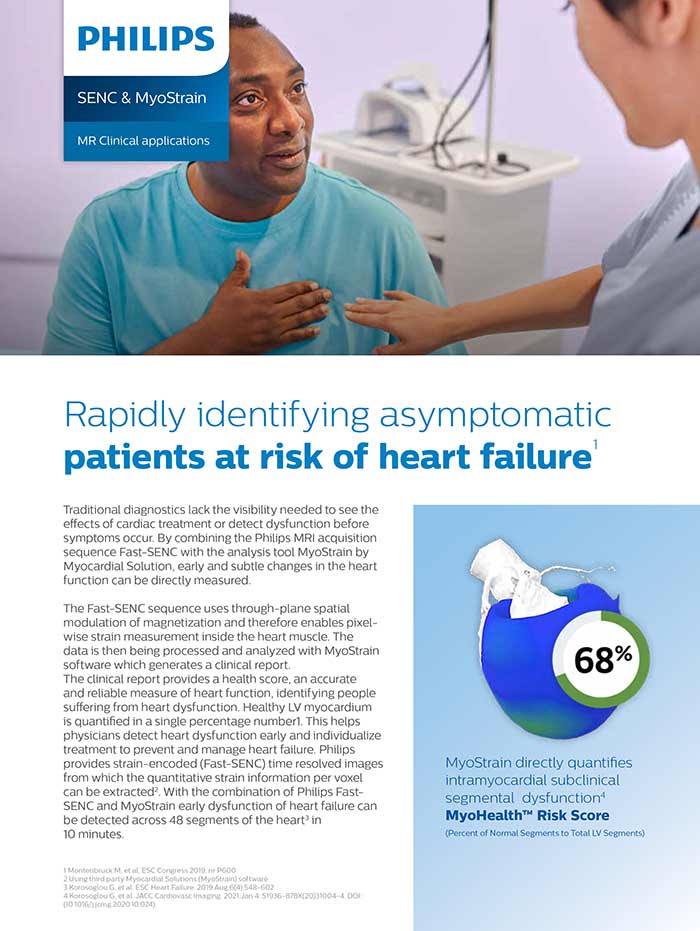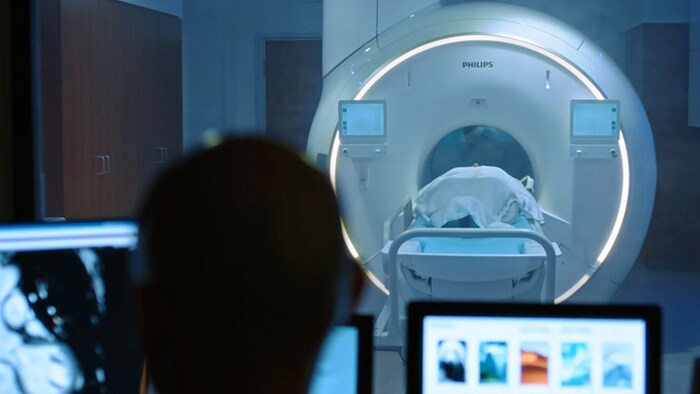Cardiology
It’s not just managing heart failure.
It’s early detection before symptoms occur.

Detecting cardiac dysfunction early
The global prevalence of heart failure is increasing.1 To enhance clinical outcomes, there is a need to detect cardiac dysfunction before the appearance of symptoms. This article looks at an integrated solution of cardiac MR (CMR), advanced visualization and analysis, and multimodality image and information management to directly measure and manage the early and subtle changes in heart function that may eventually lead to heart failure.
At a glance
Challenge
Prevalence of heart failure is increasing, but it’s not always easy to diagnose at-risk patients to start managing them early enough to avoid some of the most serious outcomes.
Solution Strengthen clinical confidence for early detection of heart failure with an integrated solution that brings together patient data, smart diagnostic systems, advanced visualization and superb workflows.
Results
An integrated solution of fast CMR, advanced visualization and analysis tools, and image and information management can help improve cardiovascular workflows and speed high-quality exams for the early management of heart failure.
We’re seeing more heart failure
46% increased prevalence by 2030 in the US alone1
Heart failure is responsible for a significant number of deaths and hospitalizations every year, and its prevalence is predicted to increase globally, with 46% increased prevalence by 2030 in the US alone.1 The need for earlier identification of patients at risk for heart failure is clear.
Identifying patients at risk for heart failure needs to become less complex
Assessing patients using their histories is key to identifying risk for heart failure. When imaging is necessary, optimized workflows can help. Despite the advantages that CMR offers in terms of image clarity and contrast (and lack of radiation), the complexity of protocols and long scan times have hindered its adoption in routine clinical use for the early diagnosis and management of heart failure. Now, bringing together fast CMR, advanced visualization and comprehensive informatics makes it more practical for clinicians to identify and manage asymptomatic patients at risk for heart failure.

MR is a very powerful tool that has become very, very fast... We have a new measure to identify and quantify subclinical probable chance of heart failure”
Dr. Henning Steen
Head of Cardiac Imaging, medneo Germany
How do we simplify workflow?
Combining data, smart imaging and advanced visualization is helping in the early detection of heart failure. Due to its image clarity, speed and detail, indications and recommendation for the use of CMR are increasing for diagnosis and monitoring of heart failure patients at earlier stages. Simplified workflow for these studies helps make them more accessible and can expand access to this high-quality diagnostic support.
COVID-19 has created an imaging backlog
Adding to the complexity of an imaging backlog is an increased need to address the expected cardiac manifestations and sequelae of COVID-19, which has resulted in added strain for many imaging operations. Access to a complete patient cardiac history, fast scanning (when imaging is warranted), advanced visualization and fast reporting of results are crucial to meet the growing demand across diagnostic imaging. As the pandemic becomes more under control and patients once again feel safe in coming into facilities for imaging appointments, their numbers are likely to surge. It’s increasingly important to have an integrated solution that helps patients on the care path receive the right care at the right time for optimal results.
Clinical implications of early diagnosis
There is a need to detect cardiac dysfunction before the appearance of symptoms. Directly measuring early and subtle changes in heart function that may eventually lead to heart failure helps physicians manage heart dysfunction early. A type of CMR known as “fast-strain encoded magnetic resonance” (Fast-SENC*) allows for shorter sequences for fast identification of patients who to date have exhibited no symptoms but who were shown to have subclinical left ventricle (LV) dysfunction compared with LV ejection fraction. Fast-SENC* and the MyoStrain analysis tool by Myocardial Solutions allow for risk stratification of patients with asymptomatic heart failure. Identifying these types of patients may have important clinical implications.3
“MR is a very powerful tool that has become very, very fast,” says Dr. Henning Steen, Head of Cardiac Imaging of medneo in Germany, who has conducted research using fast-SENC. “We have a new measure to identify and quantify subclinical probable chance of heart failure,” he says.
Go in-depth
Early diagnosis of heart dysfunction can help clinicians manage heart failure effectively.
Read the complete article to learn more about managing early detection of heart failure.
Here’s how Philips can support you
MR SmartWorkflow
See MR SmartWorkflow in action
Philips Fast-SENC and MyoStrain
With this combination, early dysfunction of heart failure can be detected across 48 segments of the heart in 10 minutes.4
*Fast-SENC is another term for SENC. 1 Savarese F, Lund L. Global public health burden of heart failure. Card Fail Rev. 2017;3(1):7–11. DOI. 10.15420/cfr.2016:25:2. 2 Ponikowski P, Voors A, St Anker S, et al, ESC Scientific Document Group. 2016 ESC guidelines for the diagnosis and treatment of acute and chronic heart failure: the task force for the diagnosis and treatment of acute and chronic heart failure of the European Society of Cardiology (ESC). Developed with the special contribution of the Heart Failure Association (HFA) of the ESC. Eur Heart J. 2016;37(27):2129–2200. doi.org/10.1093/eurheartj/ehw128 3 Korosoglou G, Giusca S, Montenbruck M, et al. Fast strain-encoded cardiac magnetic resonance for diagnostic classification and risk stratification of heart failure patients [published online ahead of print, 2021 Jan 4]. JACC Cardiovasc Imaging. 2021;S1936- 878X(20)31004-4. DOI:10.1016/j.jcmg.2020.10.024. 4 Korosoglou G, Giusca S, Hofmann NP, et al. Strainencoded magnetic resonance: a method for the assessment of myocardial deformation. ESC Heart Fail. 2019;6(4):584-602. DOI:10.1002/ehf2.12442.
Results from case studies are not predictive of results in other cases. Results in other cases may vary.
Share this article
Sign up to receive news and updates from Philips
At a glance
Challenge
Prevalence of heart failure is increasing, but it’s not always easy to diagnose at-risk patients to start managing them early enough to avoid some of the most serious outcomes.
Solution Strengthen clinical confidence for early detection of heart failure with an integrated solution that brings together patient data, smart diagnostic systems, advanced visualization and superb workflows.
Results
An integrated solution of fast CMR, advanced visualization and analysis tools, and image and information management can help improve cardiovascular workflows and speed high-quality exams for the early management of heart failure.
Share this article






